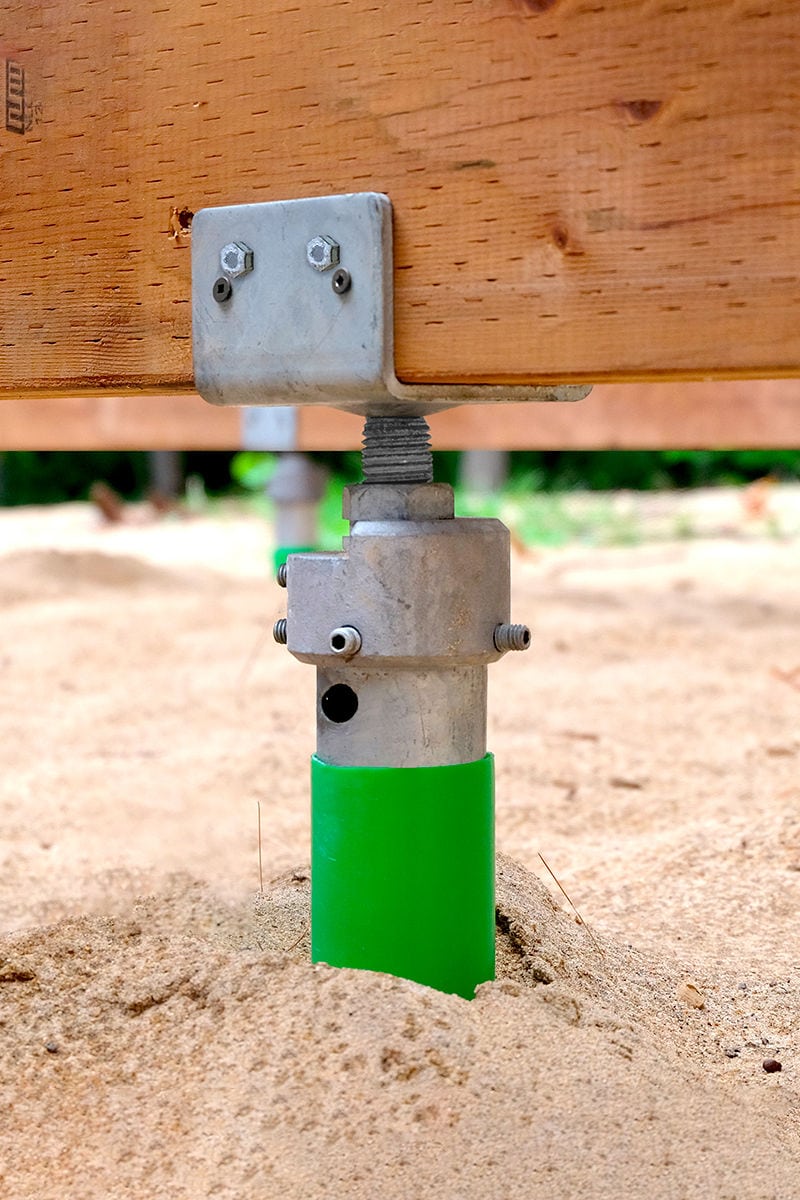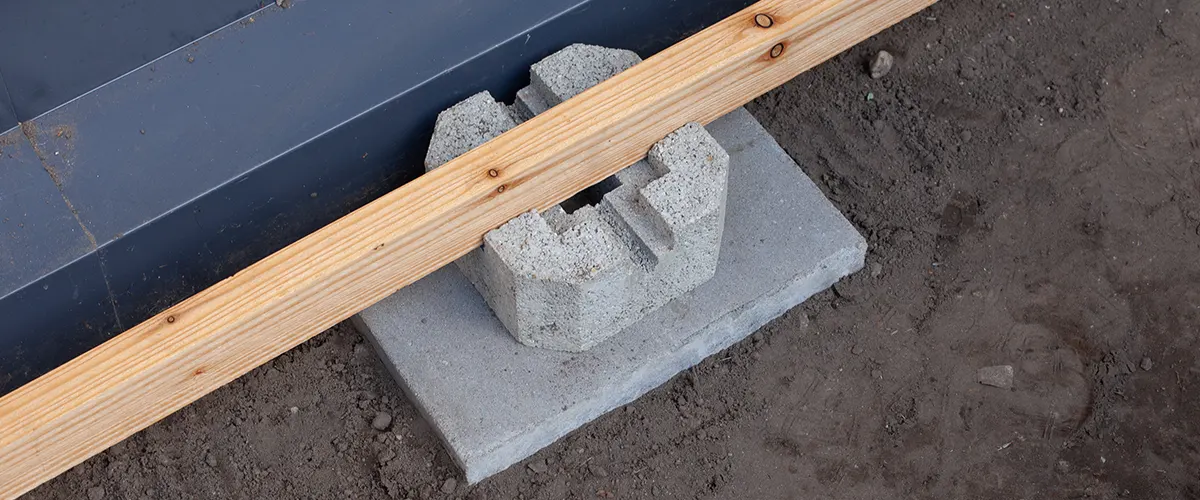Deck Footings Demystified: Your Blueprint for a Safe, Durable Outdoor Haven
Wiki Article
Choosing the Right Deck Footings for Stability and Resilience
The long life and security of your deck depend greatly on the kind of footings you select, as they provide the crucial support and security to hold up against the test of time. In this conversation, we will certainly check out the different kinds of deck footings, think about the crucial aspects to weigh when making a decision, and delve into the pros and cons of various choices.Kinds Of Deck Footings
There are a number of kinds of deck footings that can be utilized, each offering one-of-a-kind benefits and considerations. One typical sort of footing is the concrete pier footing. These grounds contain a cylindrical opening full of concrete, which provides a solid structure for the deck blog posts. Concrete pier footings are reasonably easy to install and use exceptional stability, making them a prominent choice for numerous deck projects.These footings are mounted by screwing them into the ground, which develops a safe and secure structure for the deck. They also allow for simple adjustment and progressing of the deck if required.
Alternatively, some contractors go with precast concrete footings. These grounds are constructed from durable concrete and can be found in various sizes and shapes to accommodate different deck styles. Precast concrete grounds are convenient to set up and give a secure base for the deck structure.
Ultimately, one more choice is the post-in-anchor footing system. This sort of footing involves driving a steel support into the ground and affixing it to the deck article. It uses adaptability in terms of placing the deck messages and appropriates for decks with lightweight structures.
When picking the right sort of deck footing, it is vital to take into consideration elements such as dirt problems, deck load, and local building regulations (Deck Footings). Consulting with a professional service provider or structural engineer can aid make certain the appropriate footing is selected for a safe and steady deck
Elements to Consider When Choosing Footings
When selecting the proper grounds for a deck, it is vital to meticulously consider various elements such as dirt conditions, deck lots, and adherence to local building ordinance. These elements play a considerable duty in guaranteeing the security and sturdiness of the deck structure.The kind of soil on which the deck will be built figures out the kind of grounds required. On the other hand, decks developed on clay or large soils might need grounds that can accommodate the soil's tendency to expand and contract.
An additional important factor is the deck lots. The weight of the deck, including the materials used and any potential real-time tons such as furniture or celebrations, have to be thought about when selecting footings. The footings should be designed to birth the weight of the deck and distribute it equally to stop any kind of structural concerns or failings.
Last but not least, adherence to neighborhood building regulations is critical. Structure codes differ from region to region, and it is vital to abide by the details needs established by the local authorities. Deck Footings. These codes guarantee that the deck is developed securely and satisfies the essential requirements for architectural honesty and load-bearing capability
Concrete Footings: Benefits And Drawbacks

When used as the foundation for a deck,Concrete grounds use several benefits and negative aspects. On the favorable side, concrete grounds supply excellent stability and toughness. Concrete is a strong and rigid product that can sustain heavy tons and withstand various weather. It More about the author also has a long lifespan, making it a trustworthy option for long-lasting use.
Another advantage of concrete grounds is their adaptability. They can be put into various sizes and shapes to suit different deck styles and arrangements. Concrete grounds can be tailored to fit the particular requirements and requirements of the deck framework.
Nonetheless, there are additionally some downsides to making use of concrete grounds. This can raise the total price of the deck project and may require expert help.

Helical Piers Vs. Sonotubes: Which Is Better?
In thinking about the structure options for a deck, the contrast in between helical piers and sonotubes is vital in determining the superior choice. They are turned right into the ground making use of hydraulic equipment, giving a stable and long lasting structure for the deck.When it concerns stability and resilience, helical piers have the top hand. The helical plates on the piers create a solid grip with the dirt, shifting or stopping any type of motion of the deck. This is especially advantageous in locations with unsteady or changing dirt conditions. Sonotubes, on the various other hand, rely solely on the concrete filling up for security, which might not provide the very same level of stamina and resistance.
In terms of setup, helical piers are reasonably easier and faster to set up compared to sonotubes. The hydraulic equipment made use of to turn the piers right into the ground ensures a fast and efficient process. Sonotubes, on the other hand, call for digging holes and pouring concrete, which can be labor-intensive and taxing.
Additionally, helical piers are a more flexible option. If required, they can be used in various dirt problems and can be readjusted or enhanced. Sonotubes, on the various other hand, might need added support, such as rebar, in certain dirt conditions or areas with high tons needs.
Picking the Right Footings for Your Deck's Measurements
For optimum structural honesty, it is necessary to meticulously choose the proper grounds that line up with the dimensions of your deck. The measurements of your deck, including its width, height, and length, play a significant function in identifying the type and dimension of grounds required.When selecting footings for your deck, it is essential to think about the load-bearing capability of the dirt. The weight of the deck, integrated with the weight of any kind of furnishings or people on it, puts in a considerable pressure on the grounds (Deck Footings). Therefore, it is vital to choose grounds that can properly sustain this weight without visit homepage changing or sinking over time.
The shapes and size of the grounds need to likewise be thought about. Bigger decks with higher measurements require bigger grounds to offer enough stability and assistance. The form of the grounds, whether they are square or rounded, relies on the style and design of the deck. Additionally, the deepness at which the footings are set up should be identified based on the frost line in your area to protect against any kind of heaving or moving as a result of freezing temperatures.
Final Thought
To conclude, picking the appropriate deck grounds is crucial for making sure stability and longevity. Factors such as the type of footings, the deck's dimensions, and the benefits and drawbacks of various alternatives need to be considered. Concrete footings use strength and durability, yet might be more taxing and costly to mount. Helical piers and sonotubes have their own advantages and disadvantages. Inevitably, choosing the proper footings for your deck's specific needs is necessary for a long-lasting and successful structure.These footings are composed of a cylindrical opening loaded with concrete, which gives a strong structure for the deck posts. Concrete pier grounds are relatively simple to set up and provide excellent stability, making them a preferred choice for lots of deck jobs.
Precast concrete footings are convenient to mount and supply a secure base for the deck framework.
It offers adaptability in terms find more of positioning the deck blog posts and is appropriate for decks with lightweight structures.
Concrete footings use several advantages and drawbacks when utilized as the foundation for a deck.
Report this wiki page